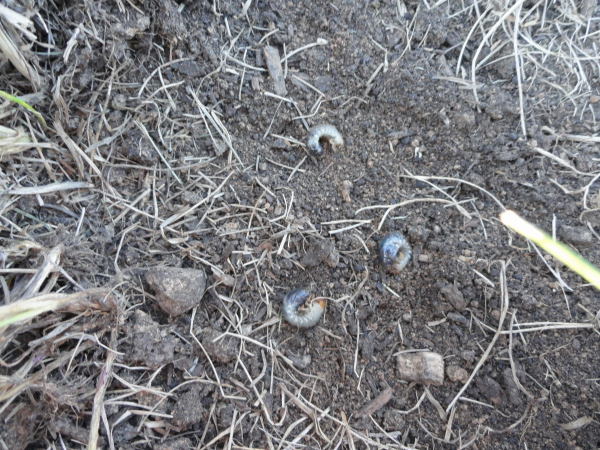Grub Control
Grubs cause the most common type of turf grass damage in the United States. Customers who add grub control receive protection against turf and subsurface-feeding insects. White grubs and similar insects often feed unnoticed beneath your lawn. You may not see damage until late August or early fall. These pests feed on grass roots and weaken your lawn’s foundation.
A large grub population can destroy a lawn within days. Feeding insects also attract animals searching for an easy meal. Birds, mice, rats, gophers, groundhogs, raccoons, and skunks dig for grubs. Their digging creates even more damage to your lawn.

Our GatorGuarantee for all customers: If you're not satisfied with our service, we'll return to your property, free of charge. And if you're still not happy, we'll refund your last application and pay you $25 for your trouble!
Let's Get Started
There are no obligations and estimates are always FREE. To get started we will need some basic address and contact information and then we can provide you with pricing.
Additional Recommended Services
Our lawn care programs include scheduled applications of fertilizer and weed control. These treatments create a healthier, lush, and green lawn. A great-looking lawn results from consistent and proper care. Successful lawn care requires technical knowledge and turf management experience.
Turf grasses in our area benefit from annual lawn aeration. Aeration reduces thatch buildup and relieves soil compaction. This service improves the flow of air, water, and nutrients. Improved flow helps nutrients reach the root system more effectively.
A soil analysis determines pH level, available nutrients, and organic matter percentage. It helps identify problems like poor turf color or bare spots. Use it to diagnose low seed germination and recurring disease issues. Soil testing is a key tool for effective lawn care decisions.
Grub Control FAQ's
We use a commercial grade insecticide that is the industry's longest lasting residual control for all types of subsurface and turf feeding pests. Some of the most common subsurface and turf feeding pests controlled are: Billbugs, European crane flies, hairy chinch bugs, mole crickets, white grubs, including black turfgrass ataenius beetles, European chafers, Japanese beetles, May and June beetles, Northern masked chafers, Oriental beetles, Southern masked chafers.
Grub damage can happen almost overnight, where your lawn looked great and next thing you know it turns brown. The best way to test for grub damage is by pulling on the grass plant, if it comes up easy with no roots chances are you have grub worm damage.
No, moles have two food sources: grubs and earthworms. By eliminating half of their food source it will push moles to look for food that is more plentiful elsewhere, but if your lawn has a good source of earthworms you still may get moles.
In addition to the grubs causing damage themselves, their presence tends to attract animals, such as moles, voles, birds, mice, rats, gophers, groundhogs, raccoons and skunks, who love to feed on an active grub population; thus, causing further damage to your lawn. In this particular case, it sounds as if the lawn has been victimized by a skunk; they do just that, cut square patches of sod and roll it back to get to the grub worms.
When beetles look for places to return back into the ground they look for a plentiful food source to feast on. If your neighbor doesn't take care of their lawn, it is like your neighbor is offering bologna for them to eat but you are offering steak, chances are they are coming to your lawn for dinner and not your neighbors.
Yes, for starters a granular insecticide needs to be applied to your lawn ASAP! This will need to be watered in, thus making it effective, which will kill off the grub population. Then the excess dead grass should be raked up and removed; then your lawn will be ready for re-seeding.
White grubs, the larval stage of beetles, come out of the ground in early June and return back into the ground in August. It is at this time when they return back into the ground that they do their destruction by feeding heavily on grass roots before they barrel deeper into the ground. Late August and throughout September is the prime time for grub damage. We treat for grubs late May thru Mid-July typically during our 4th lawn care treatment, which provides season long control of grubs.
